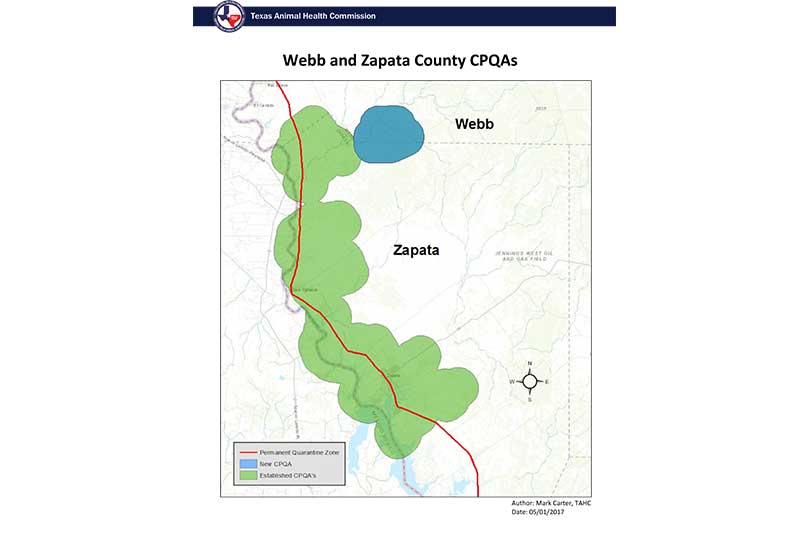The Texas Animal Health Commission (TAHC) confirmed the presence of cattle fever ticks on cattle originating from premises located in portions of Webb and Zapata counties on April 26.
The fever ticks were found on two calves undergoing voluntary inspection and treatment at a dipping vat. The infested premises are quarantined and the TAHC is conducting an epidemiological investigation to determine the potential source of the fever ticks and destination of cattle moved from the premises.
A Control Purpose Quarantine Area (CPQA) has been established for systematic inspection of livestock and wildlife hosts in portions of Webb and Zapata counties surrounding the infested premises. TAHC and USDA personnel are contacting owners with premises located in the identified CPQA.
The infested premises are located approximately eight miles outside of the Permanent Fever Tick Quarantine Zone and approximately two miles from existing Webb and Zapata county CPQAs.
Livestock, exotic livestock and wildlife hosts on premises located within the CPQA are subject to movement restrictions, systematic inspections and potential treatment in accordance with the regulation in Title 4, Texas Administrative Code, Chapter 41 Fever Ticks.
At present, there are approximately 1.4 million acres under various types of fever tick quarantine outside of the Permanent Quarantine Zone. To learn more about the quarantine areas, visit http://www.tahc.texas.gov/animal_health/cattle/#ticks.
“When producers observe ticks on their livestock, it is imperative that they contact their local TAHC Livestock inspector or region office, USDA inspector, private veterinarian or local Texas A&M AgriLife Extension office to arrange for collection and submission of tick samples to the TAHC laboratory in Austin,” Dr. Andy Schwartz, TAHC executive director said in a news release. “This extra surveillance protects the Texas cattle industry.”
Cattle fever ticks, known scientifically as Rhipicephalus (formerly Boophilus) annulatus and R. microplus, are a significant threat to the United States cattle industry. These ticks are capable of carrying the protozoa, or microscopic parasites Babesia bovis or B. bigemina, which cause the disease commonly known as cattle fever. The Babesia organism attacks and destroys red blood cells, causing acute anemia, high fever and enlargement of the spleen and liver, ultimately resulting in death for up to 90 percent of susceptible naive cattle.

